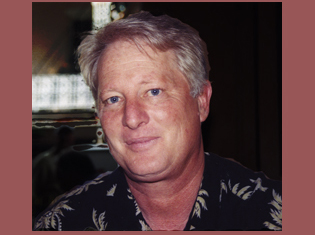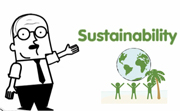Sustainability: Nature's Expertise
Sustainability is the capacity to endure.
In ecological systems, sustainability refers to the long term survival of each species living on a limited, renewable resource base. This is also a necessary precondition for the well-being of humans, as we are part of nature.
Sustainable business practices focus on delivering superior performance in three specific areas: Financial, Social, and Environmental. Sustainable business performance is commonly referred to as “triple bottom line". These values and strategies are aligned with traditional business goals and inherently improve efficiencies, reduce waste and improve profitability.
Edutainment
 |
Tom Wright on Sustainable Business Practices
1. live off current solar income and 2. there is no waste (waste is food for something else) |
The Natural Step (TNS) and Sustainability
Original file location: http://youtu.be/FFCNCQleCuk |
.
William McDonough introduces the concept of Cradle to Cradle
Original file location: http://youtu.be/o7ZU3MJJvV8 |
Sustainable Business Practices
Sustainability, industrial ecology, ecoefficiency, and green chemistry are the new principles that are guiding the development of the next generation of plastic and other products and processes. Thus, new products have to be designed and engineered from “conception to reincarnation” incorporating a holistic “life cycle thinking approach”. - Ramani Narayan
Sustainable Business Practices Should Hit 'Tipping Point' in 2013
From SustainableBusiness.com News
Sustainable business practices are nearing the so-called "tipping point" as they get close to becoming standard practice at multinationals, according to two reports released this week.
Analyst firm Verdantix expects 2013 to be the pivotal year. After analyzing spending patterns of about 2,500 global companies, they found that investments in sustainable business programs will be 50-100% higher in 2013 than in 2011.
Companies with revenues above $1 billion in Australia, Canada, the UK and the US will spend $60 billion on sustainable business programs in 2013.
"Spending on sustainable business initiatives such as energy efficiency, sustainability assurance and cleantech innovation is positively correlated with global economic growth," says Verdantix Director, David Metcalfe. "By 2013 a powerful mix of market drivers, led by the forecasted global economic rebound, will significantly increase strategic investment in sustainability programs. The arrival of the 2013 tipping point will be good news for cash-strapped cleantech innovators and struggling sustainability entrepreneurs."
Sustainable Design
- Sustainable design, also referred to as green design, eco-design, or design for the environment, is the art of designing physical objects, the built environment, and services to comply with the principles of economic, social, and ecological sustainability. It ranges from the microcosm of designing small objects for everyday use, to designing buildings, cities, and the earth's physical surface. It is a growing trend within the fields of architecture, construction, and landscape design.
Ramani Narayan
New environmental regulations, societal concerns, and a growing environmental awareness throughout the world have triggered the search for new products and processes that are compatible with the environment�The ecological impact of raw material resources used in the manufacture of a product and the ultimate fate (disposal) of the product when it enters the waste stream has to be factored into the design of the product. The use of annually renewable resources and the biodegradability or recyclability of the product is becoming an important design criterion. This has opened up new market opportunities for developing biodegradable and biobased products as the next generation of sustainable materials that meets ecological and economic requirements - ecoefficient products.
David Suzuki
- From the Declaration of Interdependence:
-
We humans are but one of thirty million species weaving the thin layer of life enveloping the world.
The stability of communities of living things depends upon this diversity. -
Linked in that web, we are interconnected- using, cleansing, sharing and replenishing the fundamental elements of life.
-
Our home, planet Earth, is finite; all life shares its resources and the energy from the sun, and therefore has limits to growth.
For the first time, we have touched those limits. -
When we compromise the air, the water, the soil and the variety of life, we steal from the endless future to serve the fleeting present.
The planet will survive. Will we?
Estimated life of the planet earth: 4,500,000,000 years
Estimated life of dinosaurs: 150,000,000 years
Estimated life of homo sapiens: 100,000 years

